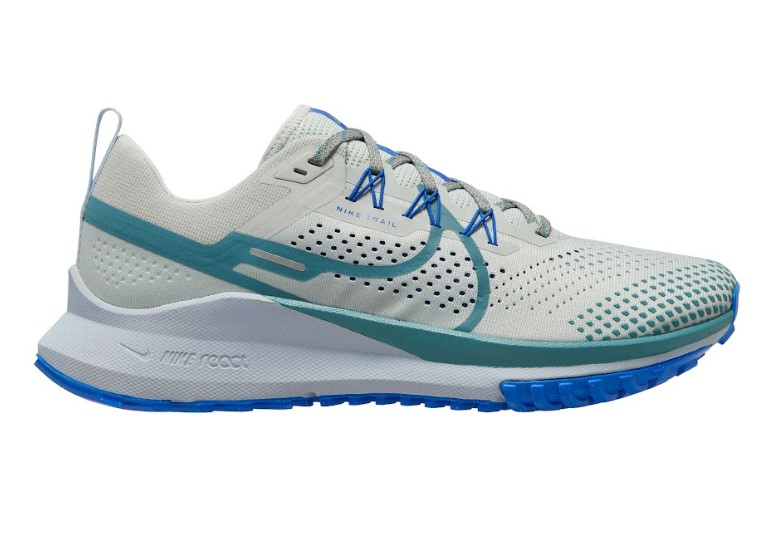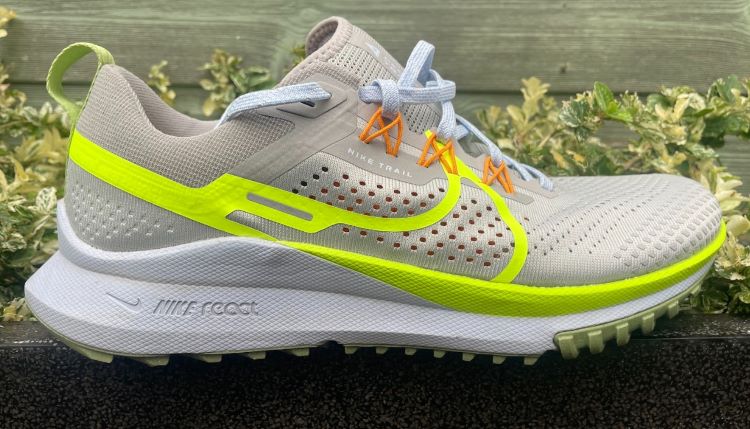Look beyond the Nike Pegasus Trail 4’s road shoe-like exterior and you’ll find a lively, pacey shoe that excels on mixed surfaces.
One of the most important things for a runner is finding the best running shoes for the running you do. Unless you’re lucky enough to live with trails right outside your front door, chances are you’ll have to cover some tarmac before you head off-road. Luckily, we’re seeing huge improvements in hybrid running shoes that easily handle road and trail.
The Nike Pegasus Trail 4 is one such jack-of-all-trades. A trusted trail workhorse built to tackle easy-going road-to-trail adventures, it packs similar responsive React midsole foam to the kind you’ll find in Nike’s road shoes. It also has quite a road shoe-like profile.
Men’s Fitness verdict
This shoe has a lightweight design with Flywire tech for midfoot support. It has a cushioned, sock-like fit with improved outsole lugs for grip and performs well on firm trails.- Lively, responsive yet balanced ride
- Good road-to-trail all-rounder
- Performs across a range of paces
- Almost no toe-box protection
- No rock plate
Nike Pegasus Trail 4 design
That road shoe look is deliberate, because this hybrid runner is designed to eat tarmac as well as it gobbles up off-road paths and trails.
The key here is the big-stack, high-drop midsole, featuring Nike React foam. It’s similar to what you’ll find in the Nike Infinity Run daily road shoes, and creates a responsive, supportive and springy ride. There are 4mm lugs underneath but no no rock plate, so if you’re looking for a shoe to tackle rocky or lumpy technical terrain, this probably isn’t it.

The engineered mesh uppers have minimal studded overlays on the toe box to boost durability, but don’t expect anything as robust as regular hardcore trail shoes.
You also get Nike’s Flywire technology, which works to provide better lockdown across the midfoot, help hold the foot in place and provide extra security.
The wide-stretch gusseted tongue is nicely padded and foot wrapping. It’s stitched in, so you’re almost slipping into a sock. Meanwhile the heel collars offer plush padding with quite a rigid heel counter to boost back-end support.
Flip them over and the rubber outsole lug grip pattern has been updated with a design informed by runner data. Strategically placed lugs of various shapes now provide more bite on softer terrain. The outsole also wraps up the side of the toe box and shoe to provide extra toughness.
Nike Pegasus Trail 4 weight, stack height and drop
One welcome improvement on its predecessor is the weight, with the Nike Pegasus Trail 4 lighter than its predecessor. It weighs in at 9.8oz / 280g in a UK size 8.5 shoe. That’s the lighter side of mid-weight for a trail shoe and only slightly heavier than the racy Hoka Tecton X2.
Unhelpfully, Nike helpfully doesn’t list stack heights. But you’re looking at somewhere around 36mm in the heel and 26mm in the forefoot for a forgiving and calf-muscle-friendly 10mm drop.
The Trail 4 has a decent price too, at just $140 / £129.95. That’s at the lower end of what you’ll pay for versatile road-to-trail shoes. Popular options like the Hoka Speedgoat ($155 / £140) come in a shade more expensive.
Nike Pegasus Trail 4 performance
In testing, I ran around 30 miles in the Nike Pegasus Trail 4. That was mainly on hard, compacted river paths and forest trails with some grassy fields and the odd section of heavy, boggy mud. I didn’t get to test them on steeper mountain trails or rocky terrain. But I reckon, given the lack of a rock plate, this shoe will perform best on harder packed, less technical trails.
For these kinds of runs, I found them well balanced. There’s a liveliness and response that helps you move across firm trails with purpose and pace and enough foot-hold security and stability underfoot to give you the confidence to take on most terrain.
The Nike Pegasus Trail 4 serves up a ride that’s smooth and cushioned enough to protect your feet without feeling disconnected to the trail underfoot. On softer surfaces, I found I could happily roll for a few hours. On harder, more compact terrain – including the road – I found them better suited to shorter distances. They move effortlessly from road to trail and back on mixed terrain runs.
The grip on the Trail 4 was reliable in most of the conditions I tested. But I only occasionally found myself on steep or slippery descents and that raised some question marks over how the traction would hold up in seriously wet conditions or on precarious or rocky terrain. Overall, though, it’s still one of our best trail running shoes.
Related content:







